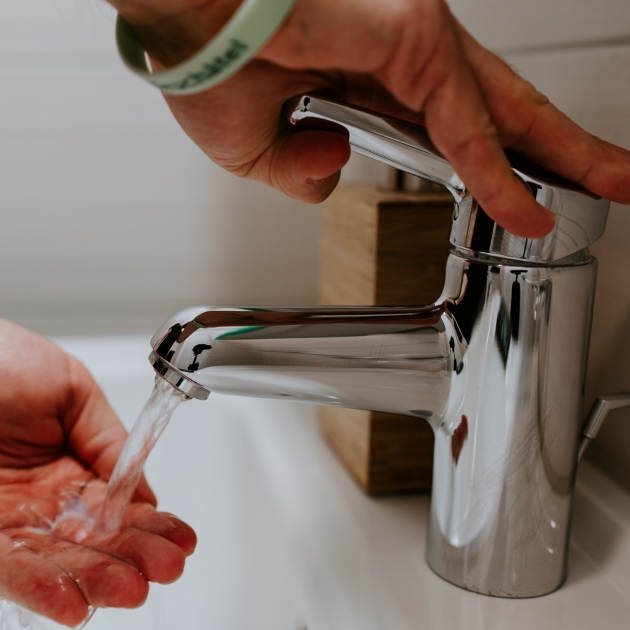The Catalan government has declared a drought pre-emergency phase in the 202 municipalities that are supplied by the Ter-Llobregat system, which includes Barcelona city, most of the metropolitan area as well as territory beyond, and affects almost 6 million people. Specifically, it will apply to municipalities in the counties of Alt Penedès, Anoia, Bages, Baix Empordà, Baix Llobregat, Barcelonès, Berguedà, Garraf, Gironès, Maresme, Selva, Solsonès, Vallès Occidental, and Vallès Oriental (all the areas shown in pink on the map below). As detailed by the Catalan minister for climate action, David Mascort, the situation "is extreme", since "we are in the worst drought the country has ever experienced". The aim of launching the pre-emergency phase is to delay the launch of more critical restrictions, which are already anticipated but when applied will have a direct impact on people's lives and the country's economy. "What we are doing today is to get ahead on things, calling on the whole of Catalonia, the public and all economic activities in the country, so that we all put ourselves in emergency mode", he stressed.
After thirty-six months of drought conditions, the reserves in the Catalan internal catchment basins - which cover the western half of Catalonia, the coloured areas in the map - remain at 19% of their capacity. As indicated by Meteocat last week, Catalonia is experiencing the most severe drought ever recorded: the magnitude of its precipitation deficits, the extent of the areas affected and the duration of the phenomenon mean that it surpasses the most extreme precedent, which was the drought of 2005-2008.
The pink-coloured areas on the map are the municipalities which now move into pre-emergency status. The red area in the Alt Empordà, in the far north-east, are the towns already subject to drought emergency rules. The water resources of the grey interior half of Catalonia are part of the Ebre catchment basin and are administered by the Ebro Hydrographic Confederation.
Drought restrictions
The new change of phase involves a series of measures and the most prominent ones contemplated in this scenario are:
- Reduction of the maximum allocation of water per inhabitant per day, which will fall from 230 to 210 litres per inhabitant per day, including economic and commercial activities.
- Prohibition of lawn irrigation, except on surfaces intended for the federated practice of sport, where irrigation can be maintained with half the allocation established until now up to a maximum of 200 m³/ha/month - until now it was 450 m³ per hectare per month.
The rest of the drought measures remain the same as in the previous phase of "exceptionality". That is:
- Survival irrigation for plants and trees is allowed with the minimum amount of water necessary, between 8pm and 8am, and only through drip or sprinkler irrigation.
- A ban on filling private swimming pools for individual or single-family use remains in force, also applying to other swimming pools without water recirculation systems. Partial refilling or first filling of public swimming pools will only be allowed in the quantities necessary to guarantee the sanitary quality of the water.
- A ban on the use of potable water for cleaning streets, sewers, pavements, facades and similar, whether public or private, except if it is the result of an accident or a fire, or there is a health risk or a risk to road safety.
- Vehicles can only be cleaned in commercial establishments intended for this activity, and which have water recirculation systems, except in cases of necessity to maintain safety and health of people and animals.
- A ban on the total or partial filling of ornamental fountains, artificial lakes and other elements of aesthetic use of water, except for artificial lakes that provide vital support for aquatic life, where the minimum use of water essential for its maintenance
- A 40% reduction of water for agricultural uses, or the replacement of part of the flows intended for agricultural irrigation by regenerated water.
- A 15% reduction for industrial uses.
- Reduction of water consumption for recreational uses (15% in similar uses and 50% in irrigation).
Excessive water consumption
Of the total of 5.9 million Catalan residents who live in the municipalities of the Ter-Llobregat system, more than 80% are in municipalities which are in compliance with the restriction of 210 litres per inhabitant per day, and then they will not notice the changes. On the other hand, those who live in areas where more than the account is used, town councils will have to take measures to adapt to this new limitation. In fact, this Monday the Catalan Water Agency (ACA) updated the water consumption data by municipalities for the month of October and, according to these, there are about twenty towns (shown in red on the searchable list below) among the affected Ter-Llobregat municipalities which, at present, exceed the provision of 210 litres per person per day.
